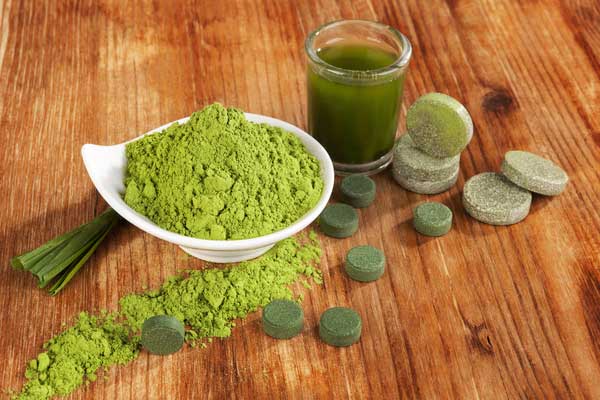Superfood Evolution presents “Spirulina vs. Chlorella: Which One Should You Take? The Ultimate Algae Showdown.” In the past decade, the benefits of spirulina and chlorella, two nutritionally dense plant-based superfoods, have gained widespread attention. While both offer incredible health benefits, they have distinct differences. This article aims to explore the main distinctions between spirulina and chlorella, empowering you to make an informed decision based on your unique health objectives.

Green Algae versus Cyanobacteria
One of the fundamental differences between chlorella and spirulina lies in their botanical classification. Chlorella is a single-celled green algae with a nucleus, while spirulina is a multicellular cyanobacteria without a true nucleus. Under a microscope, spirulina displays a spiral-shaped cellular structure, while chlorella consists of small rounded cells. Chlorella, the main supplement species, contains chloroplasts filled with chlorophyll, giving it a bright green color. Spirulina, specifically the anthrospira platensis species, also contains chlorophyll, along with a blue pigment called phycocyanin, which contributes to its blue-green color.
Highest Protein Content
Both spirulina and chlorella are protein-rich superfoods, containing all essential amino acids. However, spirulina takes the lead in terms of protein content. It is considered one of the highest protein-rich foods in the plant kingdom, with a protein efficiency ratio (PER) that efficiently concentrates protein from sunlight. Depending on the quality, dried spirulina can contain anywhere between 50 to 70 percent protein. Additionally, spirulina’s anthrospira species do not have cellulose walls, making its protein content highly digestible. On the other hand, chlorella, though still a good protein source, falls short compared to spirulina in terms of overall protein content.
Chlorophyll versus Phycocyanin Compounds
The health benefits of spirulina and chlorella stem from their unique compounds, chlorophyll and phycocyanin. Both these compounds act as potent antioxidants and anti-inflammatory agents in the body. While chlorophyll is concentrated in leafy green vegetables and green juices, chlorella stands out as one of the most condensed dietary sources of chlorophyll for humans. Chlorophyll-rich foods nourish and alkalize the bloodstream, promoting a clean and healthy internal environment. Chlorella, with its high iron content, supports red blood cell production and helps prevent iron deficiency anemia. Phycocyanin, found in spirulina, is derived from the C-phycocyanin protein and has been studied for its neuroprotective potential. Both spirulina and chlorella are excellent sources of carotenoids such as carotenes and xanthophylls.
Detoxification Potentials
While both spirulina and chlorella support the body’s detoxification processes, chlorella stands out as the preferred option in terms of detoxification. Chlorella contains higher levels of chlorophyll, a natural toxin neutralizer known for its cleansing properties. It also possesses metal-binding groups that attract certain metallic ions, including mercury, cadmium, and radioactive strontium. Research suggests that pulverized or cracked chlorella has a chelating effect on toxins. Spirulina and chlorella both contain detox elements like sulfur, which plays a role in glutathione production. Glutathione, known as the master antioxidant, protects against the harmful effects of reactive oxygen species and heavy metals.
Best Nutritional Source
Spirulina and chlorella are exceptional at converting sunlight into concentrated nutrients. Both superfoods contain omega fatty acids, essential vitamins, and minerals. However, when comparing the nutritional profiles, spirulina takes the lead. Spirulina’s highly bioavailable phytonutrients have been extensively researched and used as a sustainable supplementary food source for malnourished populations in underdeveloped countries. Spirulina has a rich historical use, having been utilized by ancient cultures surrounding Lake Texcoco in present-day Mexico City and near Lake Chad in West and Central Africa. Chlorella, discovered in 1890, requires mechanical pulverization to enhance nutrient absorption.
The Taste of Spirulina and Chlorella
In terms of taste, most people find spirulina to be superior to chlorella among microalgae. Spirulina offers a subtly sweet and nutty taste, making it a popular choice for green powders. Chlorella, often available in tablet form, has a green and slightly seafood-like flavor. However, taste preferences can vary depending on the quality of the product. Both spirulina and chlorella are widely available online and in health food stores, offering convenient green superfood powders that support overall health and well-being. If you find the taste unfavorable, both can be taken in supplement form.
Cyanotoxins
A significant distinction between spirulina and chlorella is the absence of possible cyanotoxins, such as microcystin and BMAA, in chlorella. Cyanotoxins can cause neurological and liver damage when sourced from specific cyanobacteria during their blooming stage. Spirulina, usually grown in controlled outdoor environments, is less likely to be a source of concern for cyanotoxins. However, it is essential to source spirulina and chlorella from reputable suppliers who provide certified testing or organic powders, ensuring purity and safety. Avoid low-quality, cheap spirulina imports and be cautious of chlorella’s exposure to industrial pollutants and microbial impurities.
Conclusion
In conclusion, both spirulina and chlorella offer numerous health benefits as nutritionally dense superfoods. Spirulina excels in protein content, nutritional profile, and historical usage. Chlorella stands out for its detoxification properties, high chlorophyll content, and metal-binding abilities. While spirulina and chlorella have distinct characteristics, it’s important to choose high-quality sources and consult a healthcare professional before incorporating them into your diet. By understanding the differences between spirulina and chlorella, you can make an informed decision to support your unique health objectives.
